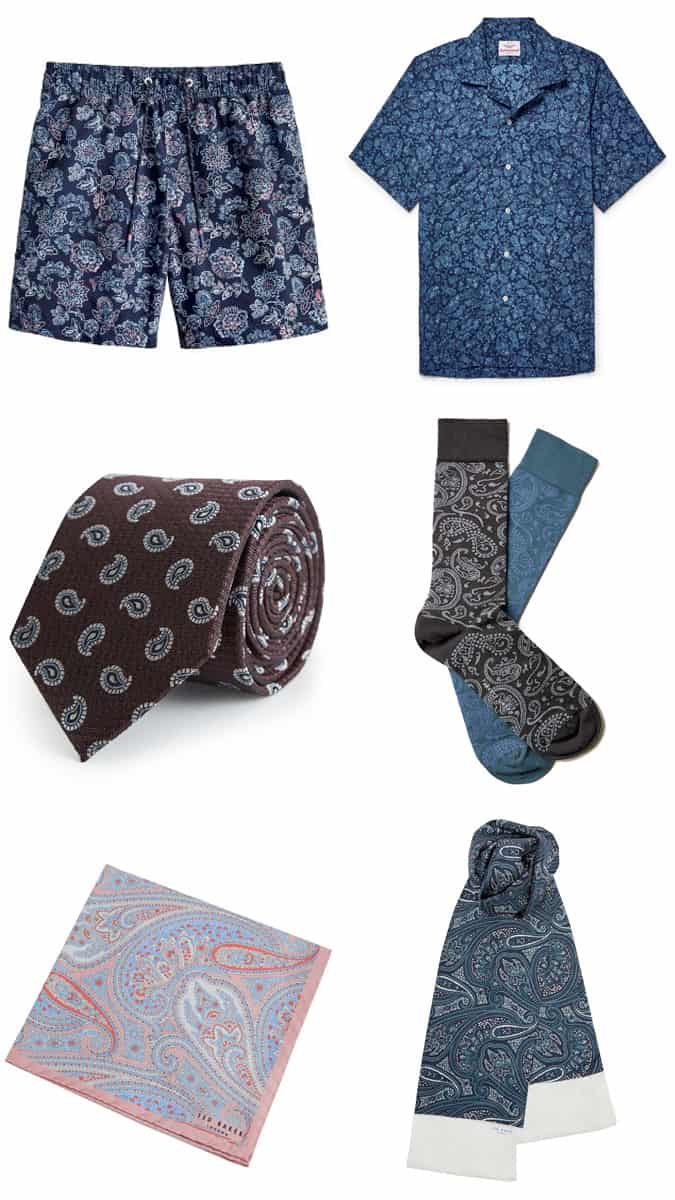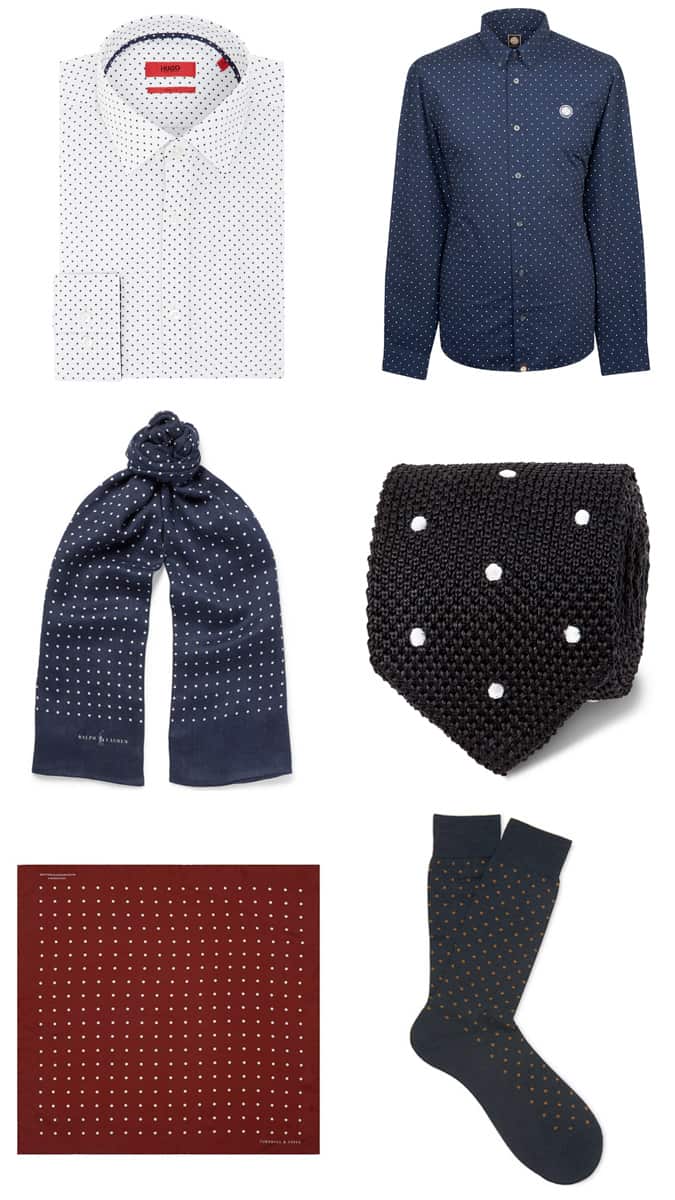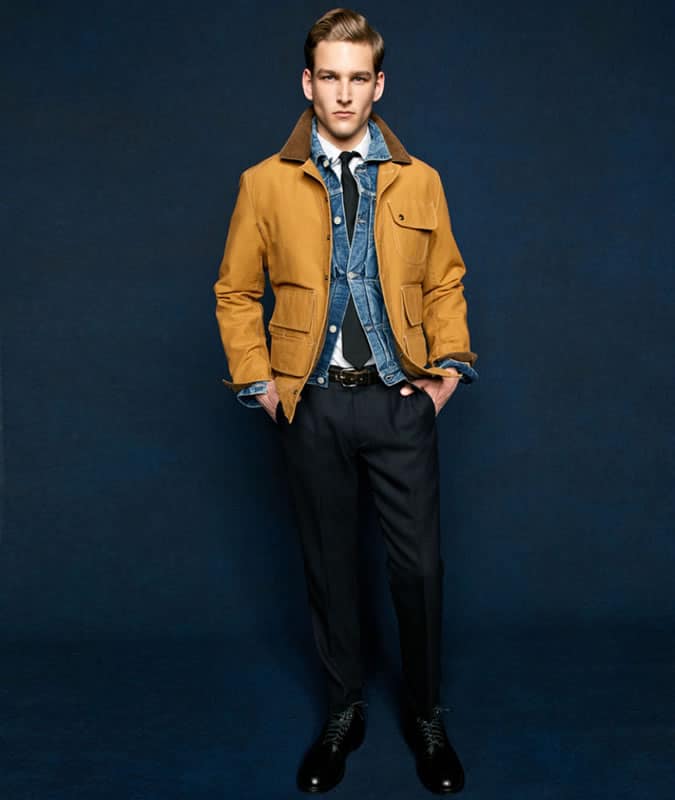An Expert Guide To Pattern Mixing
Works best on: accessories, suit details and summer shirts/shorts
Works best with: polka dots, stripes and animal prints

Polka Dots
Until recent decades, polka dots were seen as a traditionally feminine pattern – the term itself even means ‘Polish woman’ in Polish and ‘little girl’ in Czech – but they can take on a playful role in the modern man’s wardrobe.
To give blokes an easy entry into dressing in dots, most brands tend to use them on formal accessories – think ties, pocket squares and socks – allowing the little flashes of colour to pep up traditional suiting.
Because of their round shape, polka dots work well with straight-lined patterns like checks and stripes – for example, a polka dot tie against a gingham shirt. Match the palette of your accessories with your suit and let the pop of the dots do the talking.
A more daring look would be to combine a check suit with a pinstripe shirt and a polka dot tie. Again, just keep the palette tight throughout so as not to drown out the patterns.
Works best on: ties, socks, pocket squares and shirts
Works best with: pinstripes and muted checks

How To Mix Patterns: The Rules
Mixing The Same Pattern
When it comes to mixing variations of the same pattern, the rule of thumb is to play with proportion. What this means is that if you’re wearing a windowpane check suit, which typically has large squares, match this with a smaller gingham check shirt or tie.
“Stay within a tight colour palette and allow the different sizes of the pattern to do the heavy lifting,” says Thompson. “The same goes with stripes. If you prefer the idea of separates, mix up the thickness of the vertical stripes in your trousers and top.”
In addition to thickness, switching up the direction of a pattern is a move straight out of the style playbook. Consider layering a horizontal stripe T-shirt under a vertical stripe shirt.


















